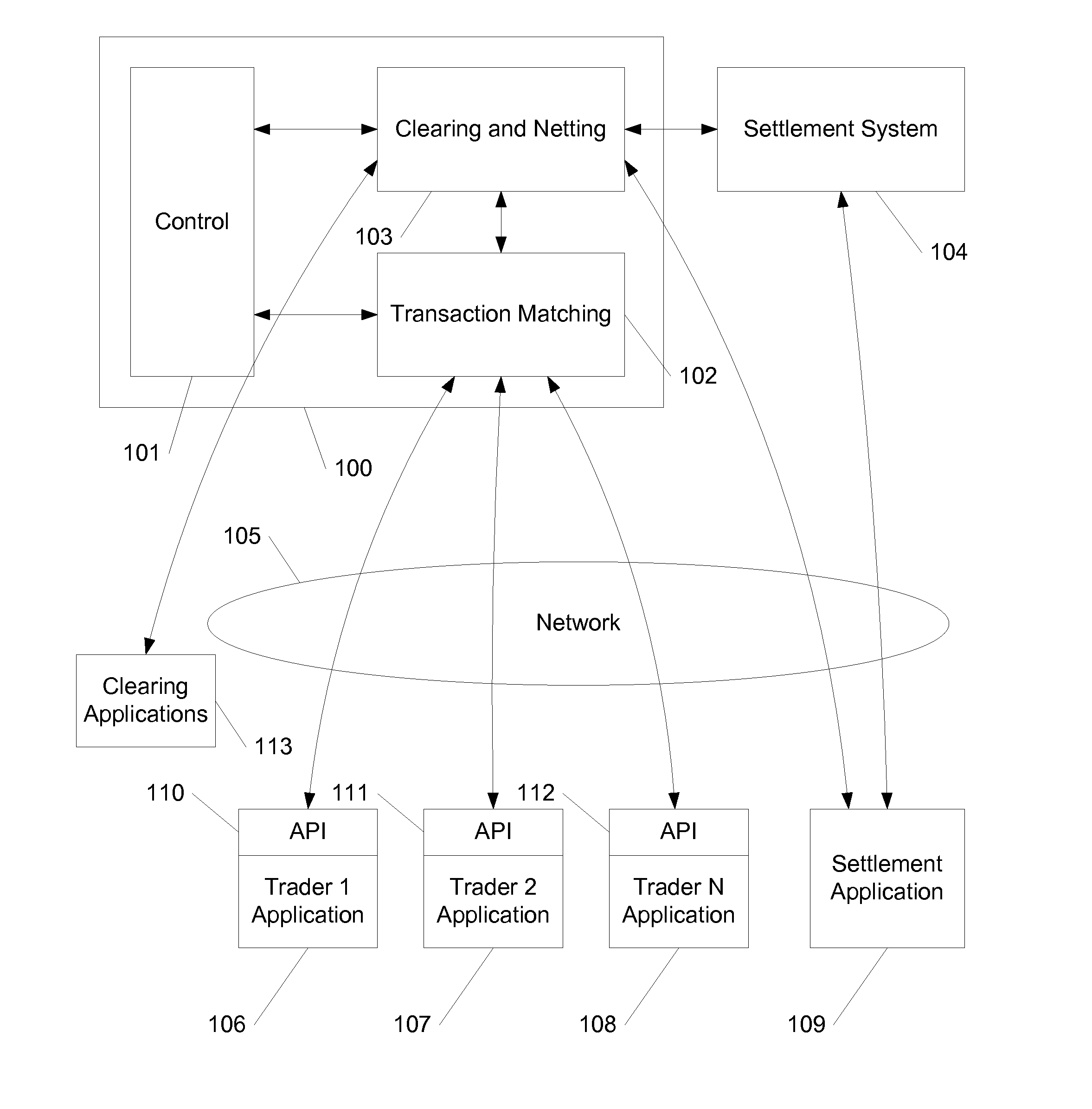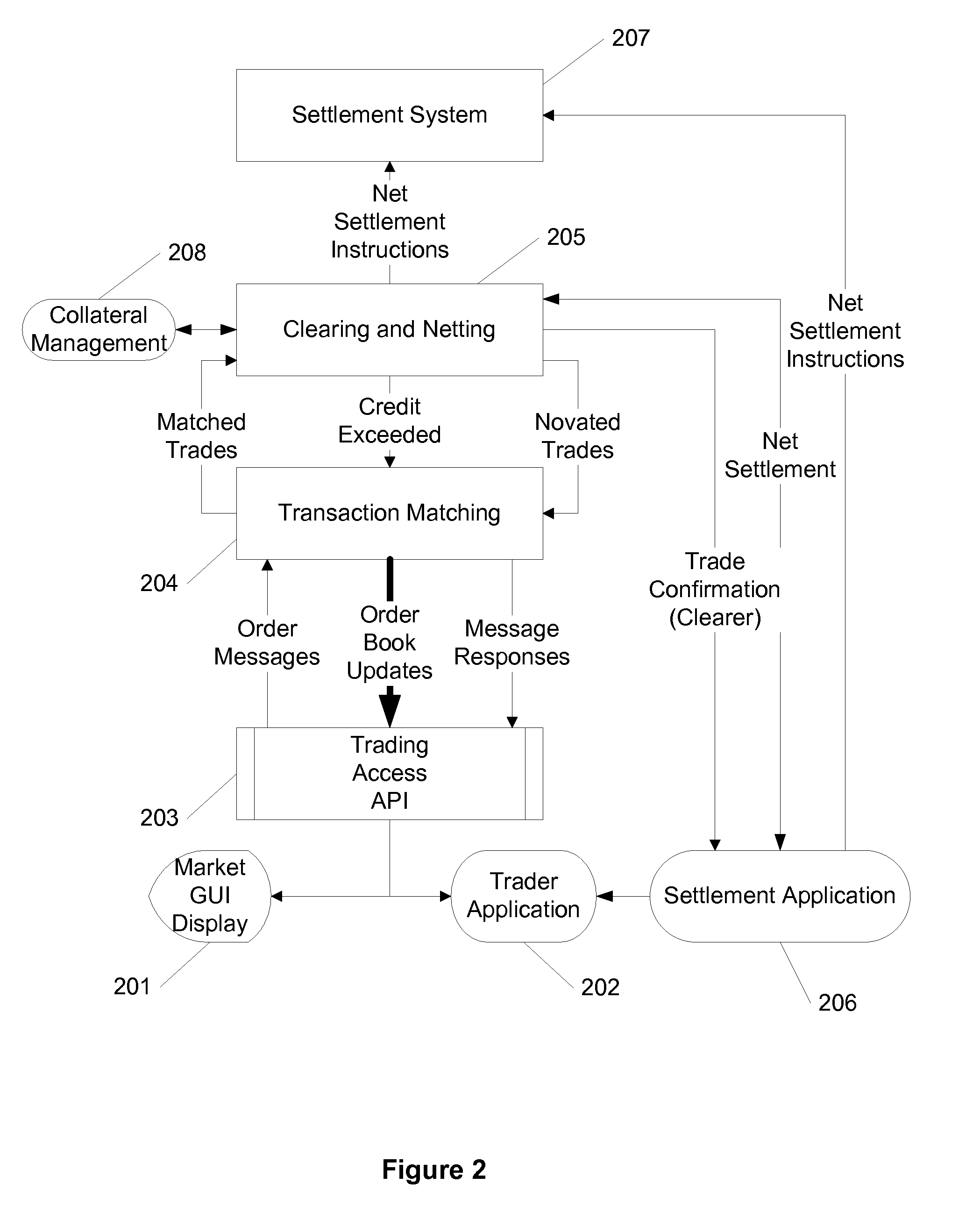Limiting Counter-Party Risk in Multiple Party Transactions
a technology of multiple parties and risk, applied in the direction of instruments, finance, data processing applications, etc., can solve the problems of liquidity risk, the risk that the holder of an investment will not be able to find a buyer, and the complexity of risk management for all parties involved
- Summary
- Abstract
- Description
- Claims
- Application Information
AI Technical Summary
Benefits of technology
Problems solved by technology
Method used
Image
Examples
example 1
[0182]The treasury department of a commercial bank provides FX transaction services to corporate customers.
[0183]In this example, a commercial bank is the user of the central counter party FX trading service, and enters orders into the marketplace on behalf of its commercial customers. The customers of the bank are typically not banks or financial institutions themselves (although they could be); in this example the customers of the bank are corporations with foreign exchange exposures. For example, a corporation who sells finished products to foreign customers, and who is paid in foreign currencies, may need to convert those payments back into its domestic currency, and will utilize the FX transaction services of its commercial bank to do so. Another case might be where a commercial producer of goods purchases raw materials from a foreign source, and needs to pay in foreign currency. In this case the producer may want to “lock in” an FX rate for future purchases and thereby avoid t...
example 2
[0192]This example relates to the proprietary trading operation of a bank treasury department, trading in multiple asset classes.
[0193]In this example, the treasury department of a large bank has an internal proprietary trading desk (so-called “prop trading”), which operates as if it were an internal hedge fund. It is actively involved in trading foreign equities and bonds, and in trading FX as a distinct asset class.
[0194]The trading for foreign securities generally involves an associated foreign exchange transaction. For example, if a fund purchases Japanese equities worth 100 million Yen, it will need to fund this purchase by acquiring the JPY on or before the settlement date for the equity trade. If a USD-based fund owns a position in Euro denominated bonds, and it sells those bonds, it may wish to repatriate the Euros into US Dollars on the settlement date. Finally, a fund which owns a position in Euro bonds may want to regularly repatriate the interest payments (the coupon) of...
example 3
[0198]This example relates to non-FX transactions subject to net settlement.
[0199]In this example, transactions outside the realm of Foreign Exchange are highlighted. These transactions illustrate the benefits of a Gross-Net Settlement indicator with a central counterparty (CCP). Specifically, interest rate derivatives (IRD's) including Forward Rate Agreements (FRA's) and Interest Rate Swaps (IRS's) are used in this example.
[0200]A Forward Rate Agreement is essentially a hedge on a term interest rate for a period beginning at some point in the future. For example, suppose a corporation knows that in three months it will need to borrow $10,000,000 for six months to fund its operations. In other words, it will be taking a six month loan at a point three months in the future. Borrowing rates are almost always based on some differential over an “Interbank rate” such as LIBOR or EURIBOR. The corporation knows that it will pay, for example, “one point over LIBOR” but it does not know, tod...
PUM
 Login to View More
Login to View More Abstract
Description
Claims
Application Information
 Login to View More
Login to View More - R&D
- Intellectual Property
- Life Sciences
- Materials
- Tech Scout
- Unparalleled Data Quality
- Higher Quality Content
- 60% Fewer Hallucinations
Browse by: Latest US Patents, China's latest patents, Technical Efficacy Thesaurus, Application Domain, Technology Topic, Popular Technical Reports.
© 2025 PatSnap. All rights reserved.Legal|Privacy policy|Modern Slavery Act Transparency Statement|Sitemap|About US| Contact US: help@patsnap.com



